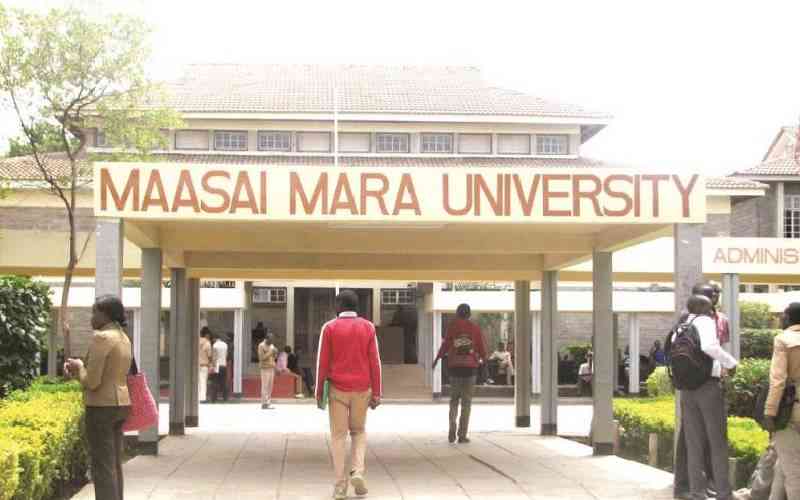By Dr Lawrence Esho
In spite of the potential controversy this might generate, I wish to submit that Africa’s second highest mountain, Mt Kenya, got its name from the Maa phrase E-rukenya, which means mist or snow.
This would imply that the Maa name for Mt Kenya is Oldonyo Le-rukenya in reference to its snow-capped peaks and enveloping foggy cloud.
However, the popular Maa name for Mt Kenya is Oldoinyo Keri, meaning striped mountain.
The phrase Mao (Anglicised form of Mau) has recently inserted itself into the mental schema of most East Africans.
The Maa form il-mao means "twins" and is historically used to designate two hill ranges, thus e-mao narok (Mau Narok) situated south of Nakuru and e-mao nanyokie (Mau-Nanyuki) which is north of Eldoret, in reference to the characteristic "black" and "red soils", respectively.
The former is the source of the Mara River (Enkare-Mara) which stands for "the spotted river" in reference to the small thickets that grace its banks.
Longonot, a Kikuyu corruption of the Maa O-loonongot refers to "volcanic vales" that descend from the mountain’s crest, through the foothills to the plains below.
Oldonyo Sabuk, (Ol-donyo Sapuk) means "the big mountain". Other nomenclatures for physical features include Kajiado (ol-kejuado), which stands for "the long plain" (Kaputiei plains).
Serengeti (e-serenket) and Amboseli (Empusel) stand for "flat grassy plain" and "open plain"; respectively.
E-nchorro E-muny
Nairobi derives its name from the Maasai phrase Enkare Nairobi, which translates to "the place of cool waters".
Nakurro is the Maasai word for the Anglicised form, Nakuru, in reference to the characteristically barren scrublands around the Lake Nakuru basin. The same may refer to the winds that frequently whirl around the enclave, engulfing it with clouds of dust, hence, "the place of the dust-storms".
Stay informed. Subscribe to our newsletter
Eldoret derives its name from the Maa word e-ntore, which means "stony river" in reference to the stony bed of the Sosiani River, which traverses over the Uasin Gishu (il-wuasin-kishu) Plateau.
Ngong’ distorts the Maa Enk-ongu which, together with its synonym E-nchorro (Njoro), stands for "water spring". The common Maasai name for Ngong’ is E-nchorro E-muny, which directly translates as "Rhino Spring".
Others include Nyahururu (e-naiwurruwurr), meaning waterfall, Naivasha (e-naiposha), meaning lake and Limuru (Loolmorog) in reference to the native plum tree species.
Loresho (O-lorresho), which is synonymous with Uthiru (Lo-sero), refer to the "scrublands" that were initially found at the foothills west of Nairobi.
Some place names are more explicit in identifying vegetation species. Gitaru for instance, is the Kikuyu aberration of Maa en-kitarru, which stands for "orange-leaved croton" tree.
Embakasi/Mbagathi (Em-pakasi) is a river. Em-pakasi oo lera is the Maa for Athi River, meaning "the Acacia lined river". Oldama O-rropil, which stands for "a sweet smelling hillside" is a place name so grossly misunderstood, that it is now known as Eldama Ravine.
Ol-jororok (Olchorro Orok) means "the black spring", Londiani (l-oltiani) is "Bamboo country", Gilgil (il-girgir), Subukia (i-sipukia) and Loliondo (O-loliontoi), refer to Acacia, Dombeya-dawei and Elgon-Olive tree species.
Maa place names may also give a hint regarding historical settlement patterns. Il-wuasin-kishu is the Maa form for Anglicised Uasin Gishu, which stands for "the people of the spotted cattle", in reference to a segment of the Maasai (olosho) that once inhabited the elevated plateau north of the Kerio Valley.
Molo District in Nakuru is historically the home of the Il-molo, an Ogiek Dorobo community, while the Elgon Maasai (il-koony) inhabit the area around Mt Elgon.
The list is endless. Many of the original Maasai spatial names have been corrupted following anglicisation during the colonial era, ethnic plagiarisation and colloquial vulgarisation.
—The writer is a lecturer, School of Environmental Studies, Chepkoilel University College.
 The Standard Group Plc is a
multi-media organization with investments in media platforms spanning newspaper
print operations, television, radio broadcasting, digital and online services. The
Standard Group is recognized as a leading multi-media house in Kenya with a key
influence in matters of national and international interest.
The Standard Group Plc is a
multi-media organization with investments in media platforms spanning newspaper
print operations, television, radio broadcasting, digital and online services. The
Standard Group is recognized as a leading multi-media house in Kenya with a key
influence in matters of national and international interest.
 The Standard Group Plc is a
multi-media organization with investments in media platforms spanning newspaper
print operations, television, radio broadcasting, digital and online services. The
Standard Group is recognized as a leading multi-media house in Kenya with a key
influence in matters of national and international interest.
The Standard Group Plc is a
multi-media organization with investments in media platforms spanning newspaper
print operations, television, radio broadcasting, digital and online services. The
Standard Group is recognized as a leading multi-media house in Kenya with a key
influence in matters of national and international interest.







